Despite a flurry of diplomatic activity over the last few weeks, the situation around Ukraine is tense. Both Russia and NATO are enhancing their respective military build-up.
Putin-Macron discussions held in Moscow on 7 February 2022 failed to resolve the tensions. German Chancellor is visiting Moscow to meet Putin. The recent visit of the UK Foreign Secretary Liz Truss to Moscow on 10th February was a complete washout. The Russian Foreign Minister Lavrov described the discussions as those between the “mute and the deaf” and “going nowhere”.
In the meanwhile, Russia has started military exercises with Belarus. This has caused grave concern in Europe. The West has raised its rhetoric about the imminent Russian invasion of Ukraine. The US Embassy staff is being evacuated. Russia has denied that it has any plans to invade. The war of narratives has intensified on both sides.
At the heart of the current stand-off is the Russian demand that NATO stops its eastward expansion and give legal guarantees to Russia that Ukraine would not be included as a member. NATO has refused to give any such guarantees.
The Russian contention is that NATO had promised Russia that it will not expand eastwards. NATO denies having made any such promises.
Russia says that the written responses received from the United States and NATO to the Russian proposals “ignored a key question for Moscow: how the United States and its allies intend to follow the principle of equal and indivisible security, fixed in the basic documents of the OSCE and the Russia-NATO Council, i.e. refusal to strengthen their security at the expense of the security of other countries.”[1]
NATO’s position is that Russia cannot veto the security choices that sovereign countries may like to make. Every nation has the right to choose its own path; NATO is a ‘defensive alliance’; Russia’s military build-up is ‘unjustified’ and that NATO will not compromise on its ability to defend its allies.
NATO Secretary-General has publicly talked about the risk for a “full-fledged invasion” as well as “other types of aggressive actions, including attempts to topple the government in Kiev, hybrid cyber-attacks and many other types of Russian aggression.” He has talked about the presence of Russian intelligence officers operating inside Ukraine.[2]
In the meanwhile, NATO has also strengthened its eastern flank. The UK, Netherlands, Denmark, Italy and Spain have provided troops, planes and ships to deal with the Russian ‘threat’. US Stryker units are being deployed in Romania within days.
The United States’ President has warned Russia of ‘severe’ sanctions if it invades Ukraine. It has sent about a thousand troops to Europe and assigned 8500 extra troops to the NATO Response Force for easy and quick deployment.
NATO already has battlegroups in the Baltic republics and Poland. The national forces are integrated into these battlegroups. Additional battlegroups are likely to be deployed in Romania which already hosts a NATO ballistic missile defence system. Russia says BMD deployed in Romania by NATO is a threat to itself. NATO is also strengthening its presence in the Black Sea region. France has offered to lead the NATO battlegroup in Romania. Important decisions will be taken in the forthcoming meeting of NATO Defence Ministers.
Assessment
The risk of a military conflict has increased with build upon both sides as both sides bolster their military build-up. Diplomacy is continuing but it has not yet led to the diffusion of tensions.
Yet, both sides know well that the military conflict will be debilitating for either side. Having withdrawn from Afghanistan recently, it is unlikely that NATO would deploy tens of thousands of troops that would be needed to fight the Russians in an invasion scenario.
It is not obvious either how Russia will gain by invading Ukraine. Such an action would certainly invite a comprehensive response from the other side including punitive economic and financial sanctions which might cut Russia off from the international financial system. That would prove to be damaging for the Russian economy. But, Russia may be able to survive the damage with little help from its friend China.
Europe depends upon Russia to meet its energy needs to the extent of 20 to 25 percent. In the event of a conflict, Russia would respond by cutting off energy supplies to Ukraine and Europe at peak winter time. Ukraine will lose two billion euros of revenue that it gets annually in natural gas transit fees.
Putin-Xi meeting in Beijing recently has attracted a great deal of attention. The two sides issued a lengthy joint statement in which they talked about “no-limit” cooperation and held that their strategic partnership is superior to that of military alliances and blocs promoted by the West.
But how far will China go in supporting Russia in the event of an actual military conflict is a moot question. China would not like to get involved ina military conflict between Russia and NATO. China has a strong economic relationship with Europe. It will have its own calculation to make. It may seek to defuse tensions by offering a platform for mediation.
Russia-China partnership is unequal, Chinese economy being at least 10 times bigger than that of Russia. China-Russia trade mix is dominated by Russian oil and gas exports to China. The conflict will make Russia a junior partner in the Russia-China relationship.
The Ukraine crisis will have a global impact. There is a growing concern in Taiwan that China may be emboldened by Russian coercive actions in Ukraine. The recent Indo-Pacific strategy announced by the US reiterates its commitment to the Indo-Pacific but there is growing apprehension whether the US would have the capability to deal with a two-front situation in Europe and the Indo-Pacific.
The roots of the present tensions can be traced to the 1990s when the West treated Russia as a defeated country after the Cold War ended and the Soviet Union collapsed. The US did not agree to accommodate Russia as an equal partner in European security. NATO whose key objective was to contain the USSR was not dissolved when the USSR itself vanished. Instead, NATO has expanded five times since the collapse of the Soviet Union. Russia sees NATO expansion as a threat.
Putin has taken a gamble and upped the ante by massing troops on the Ukrainian border and carrying out military exercises with Belarus. NATO has also pumped in weapons in the member countries. Russia is demanding that European security architecture may be rewritten. It has made several proposals over the years. It cannot tolerate NATO’s eastward expansion. For the moment, NATO is not agreeable to exceed to that formally.
The Russian annexation of Crimea in 2014 has also hardened European attitudes. Ukraine, Poland, Romania and the Baltic counties have deep distrust of Russia. They have a significant influence on NATO policies.
There is an ongoing civil war-like situation in Ukraine. The Minsk Agreements which have been endorsed by the Security Council have not been implemented. Russia has a grouse that the west is not implementing the Minsk Agreements which call for a measure of autonomy to the Russian speaking areas of Donbas and Lugansk in eastern Ukraine.
Every crisis brings opportunities. The Ukraine crisis also presents an opportunity to both sides to reshape the European security architecture. An equitable European security architecture will be good for the world. Europe has any number of ‘neutrality’ models that can be applied to the present situation. Some compromises can be reached.
But that is easier said than done. Most European countries and the Baltic republics see Russia as a major threat. Even the US regards Russia as a greater threat than China.
While neither side might want a conflict, an accident can happen. For the moment, the conflict is escalating despite diplomacy. Hopefully, the hot conflict will not happen but the Cold War is certainly on.
The situation may not yet be as bad as the 1962 Cuban Missile crisis when Russia and US came to the brink of a nuclear war. But, Russia-US tensions do raise the apprehensions of a conflict which may go out of control. The Ukraine crisis is the first of the major crises of the new Cold War that is engulfing the world.
The Ukraine standoff restricts India’s manoeuvring space between the two sides. Inda has taken the correct stand that the two sides have ‘legitimate’ interests and that they should resolve their differences peacefully through dialogue. This is the best India can do as it has deep security and economic interests intertwined with Russia, Europe as well the US.
[1]https://mid.ru/ru/foreign_policy/news/1797962/
[2]https://www.nato.int/cps/en/natohq/opinions_191691.htm?selectedLocale=en
(The paper is the author’s individual scholastic articulation. The author certifies that the article/paper is original in content, unpublished and it has not been submitted for publication/web upload elsewhere, and that the facts and figures quoted are duly referenced, as needed, and are believed to be correct). (The paper does not necessarily represent the organisational stance... More >>
Image Source: https://e3.365dm.com/22/01/1600x900/skynews-blinken-ukraine-lavrov_5648046.jpg?bypass-service-worker&20220121114927

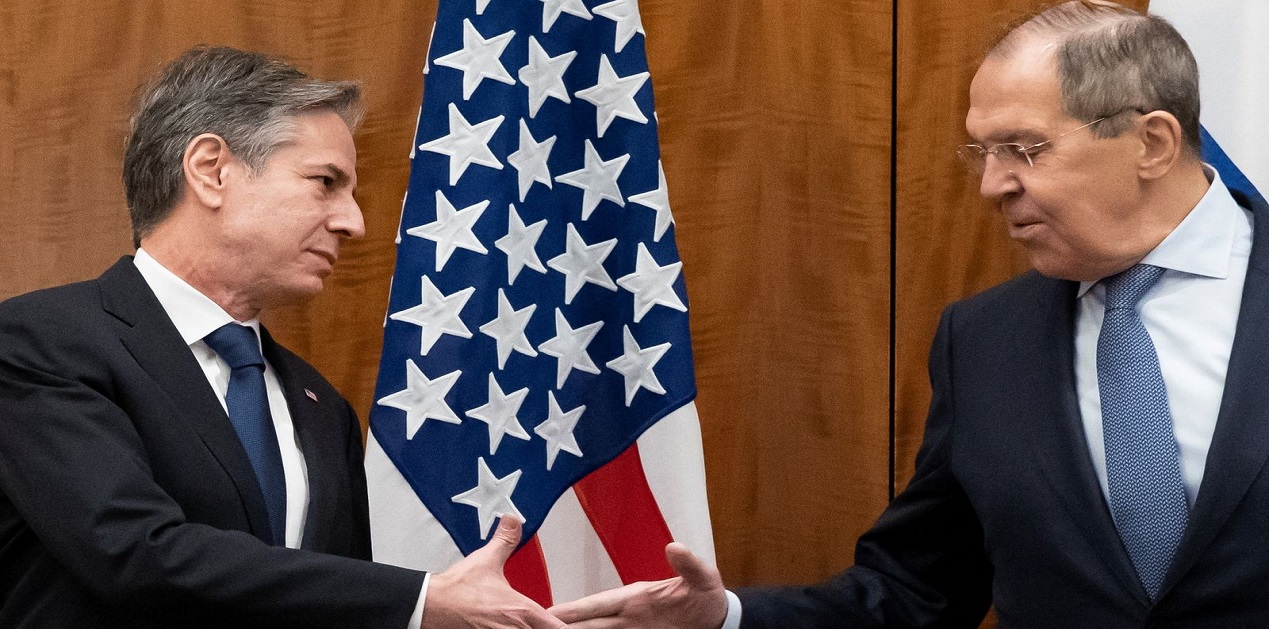
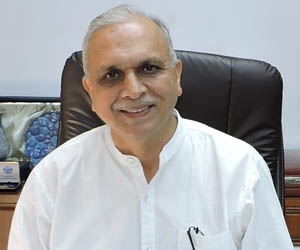
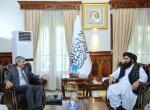
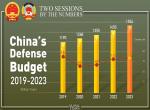
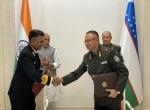
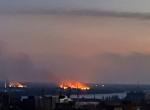
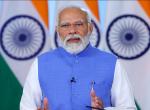
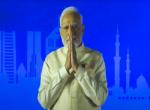

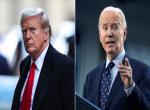
Post new comment